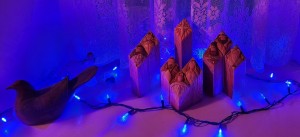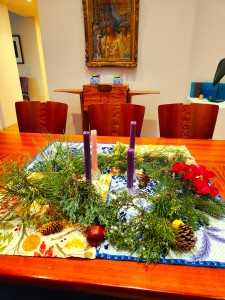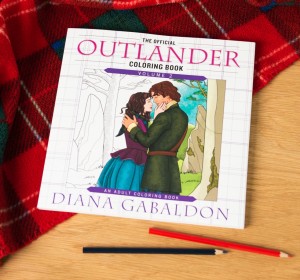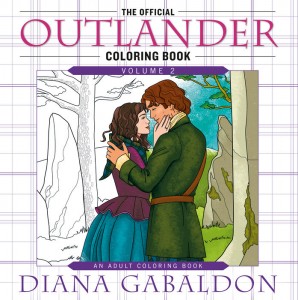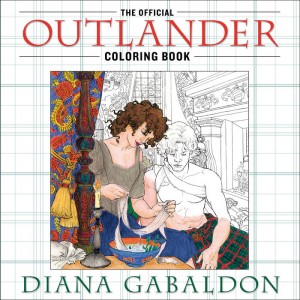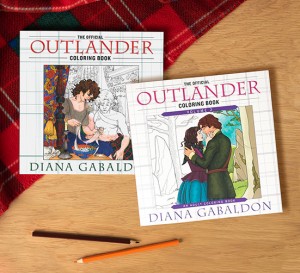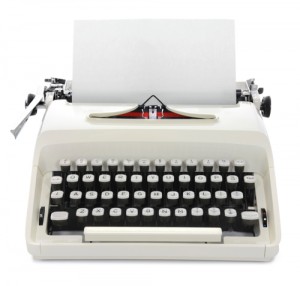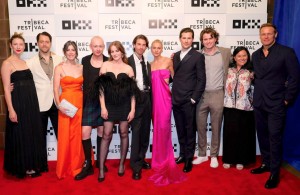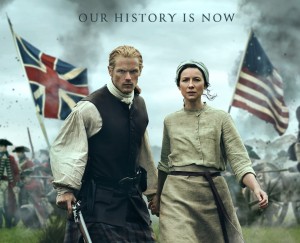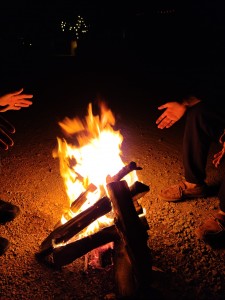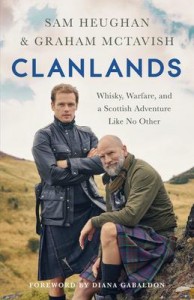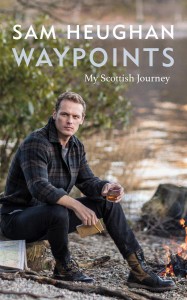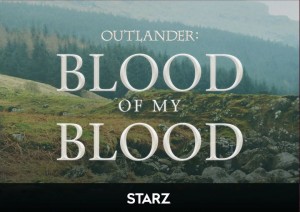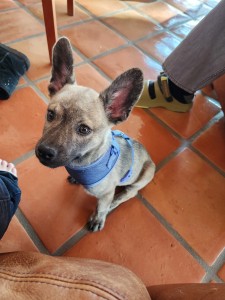 Well, aside from incessant travel, a new puppy (our son’s, but he comes over to run around in our big backyard), 2-300 emails a day, and the Rancho Mirage Writers Festival (at which I accidentally had breakfast with Alan Dershowitz)…you know, not that much…
Well, aside from incessant travel, a new puppy (our son’s, but he comes over to run around in our big backyard), 2-300 emails a day, and the Rancho Mirage Writers Festival (at which I accidentally had breakfast with Alan Dershowitz)…you know, not that much…
But I’m digging my way through the email and engagements—but also writing, so thought I’d share a bit of Book Ten, for fun.
[EXCERPT FROM UNTITLED BOOK TEN, Copyright © 2023 Diana Gabaldon – possible spoiler, but not likely]
William opened his eyes and lay still. He’d got used to not knowing quite where he was upon wakening, save when he slept in the woods. Woods at night are mysterious places, and his inner ear heard sounds all night, some deep part of his brain evidently recognizing and dismissing things like wind through leaves, the falling of acorns or the patter of rain on the canvas of his lean-to, but still sensitive enough to apprise him of the heavy pad of a walking bear nearby—to say nothing of the branches snapping in its path.
The result of this behavior on the part of his brain was to keep him aware of his circumstances all night and thus unsurprised at dawn, even if he never woke all the way.
He’d slept like a log last night, though, worn out from his journey, plied with good, hot food and as much alcohol as he could drink. His memory of going to bed was confused, but he was lying now on the floor of an empty room—he felt the smooth boards under his hands, something warm over him. Light filtered through a burlap-covered window…
And quite suddenly, the thought was just there in his mind, without warning.
I’m in my father’s house.
“Jesus,” he said aloud, and sat up, blinking. All of the day before came flooding back, a jumble of effort, sweat and worry, climbing through forest and cliffs, and finally seeing a large, handsome house emerge, its glass—glass. In this wilderness?—windows twinkling in the sun, incongruous amid the trees.
He’d pushed himself and the horse past fear and fatigue, and then—there he was, just sitting on the porch. James Fraser.
There had been other people on the porch and in the yard, but he hadn’t noticed any of them. Just him. Fraser. He’d spent miles and days deciding what to say, how to describe the situation, frame his request—and in the end, had simply ridden right up to the porch, breathless, and said, “Sir, I need your help.”
He drew a deep breath and rubbed both hands through his disordered hair, reliving that moment. Fraser had risen at once, came down the steps, took him by the arm. And said, “You have it.”
“You have it,” he repeated softly, to himself. Yesterday, that had been enough—the relief of knowing help was at hand. The relief was still with him, but other things had crept in while he slept.
The thought of Papa was still a blade in his chest and a stone in his belly. He hadn’t forgotten, even under the onslaught of people and the comfort of a lot of whisky.
There had been an avalanche of people, flooding out of the house, running from the yard and from what seemed to be a party going on under a huge tree. He’d noticed only three people in the swirling mass: Mother Claire, little Fanny, and a few moments later, his sister.
Sister. He hadn’t expected to find Brianna here. He’d been too stunned, by fear, dread, apprehension, fury and desperation, all happening at once, to even try to imagine his reception at Fraser’s Ridge. And, he admitted to himself, because I could scarcely stay in the saddle, and if I’d tried to make the speech I’d thought out, I’d have fallen on my face before I got the first sentence out.
But he had got it out, and he’d got his answer.
The encouragement of that was enough to get him on his feet. The thing that had covered him was a homely piece of knitting the color of vomit, and he folded it carefully and set it aside. He looked about for a utensil of some sort, and found a battered tin pot, placed by the door with a large bottle beside it, with a label tied round its neck, reading “Drink Me.” He pulled the cork and sniffed. Water. Exactly what he needed, and he drank thirstily, holding the bottle with one hand and unbuttoning his breeches with the other.
He’d just about finished when the door opened. He choked, spraying water, and tried to cover himself with his other hand.
“Good morning, William,” Fanny said. “I brought you something to break your fast. But there’s porridge and bacon downstairs. When you’re wead-ready.” She was holding a thick slice of buttered bread and a wooden cup that smelled like beer, and looked amused.
“Thank you, Fanny,” he said, buttoning his breeches with what dignity he could summon. “Ah…how have you been?”
“Very well, thank you,” she said, and straightened her back, thrusting a pair of new small breasts into sudden prominence. “I’ve learnt how to talk. Prroperly,” she added, rolling her ‘r’s slightly.
“So I perceive,” he said, smiling. “Your voice is lovely, Frances. Is that beer?”
“It is. I made it,” she said proudly, and handed him the cup.
It was small beer, and noticeably sour, but he was still thirsty and it went down without effort. So did the bread and butter, which he wolfed in a few bites. Frances watched him with approval.
“Why is it that women like to feed men?” he asked, swallowing the last mouthful. “We’re very grateful, of course, but it seems a good deal of effort for little gain.”
She’d gone a bit pink in the face, and he thought she looked like a small flower, the sort you found hiding in the grass in a spring meadow.
“Mrs. Fraser says women want to keep things alive, and men want to kill things,” she said, taking the empty cup. “But we need men to do that for us, so we feed them.”
“Indeed,” he said, rather startled at hearing this sort of opinion attributed to Mother Claire.
“Are you going to kill the man who took Lord John?” she asked seriously. Her flush had faded, and her eyes were serious. “I listened. I heard what you told Mith-Mister Fraser.”
He took a deep breath, and felt the fresh-scented air of the woods cleanse him of the last traces of fatigue.
“Yes, Frances,” he said. “I am.”
[end section]
Click to visit my Book Ten webpage for information on this book, and to read more excerpts from it.
Some folk asked for a photo of my son’s (Sam Sykes) new puppy (above). This is Arby, aged three months. His mother was (we’re told) a French bulldog, and his father is, um, unknown (but I kind of suspect one of the local coyotes, given his long legs and markings). Very sweet and smart!
He’s got those sort of watered-silk markings on his back legs that some French Bulldogs have—though his actual coat looks a LOT more like a coyote…
This excerpt was posted on my official Facebook page on February 10, 2023.
Posted on February 10, 2023 4:38 PM
 It’s just after midnight, which means that it’s Christmas! Merry Christmas to everyone, whether for you it’s a religious celebration, a time of seasonal contemplation and renewal, or just a few days off work!
It’s just after midnight, which means that it’s Christmas! Merry Christmas to everyone, whether for you it’s a religious celebration, a time of seasonal contemplation and renewal, or just a few days off work!